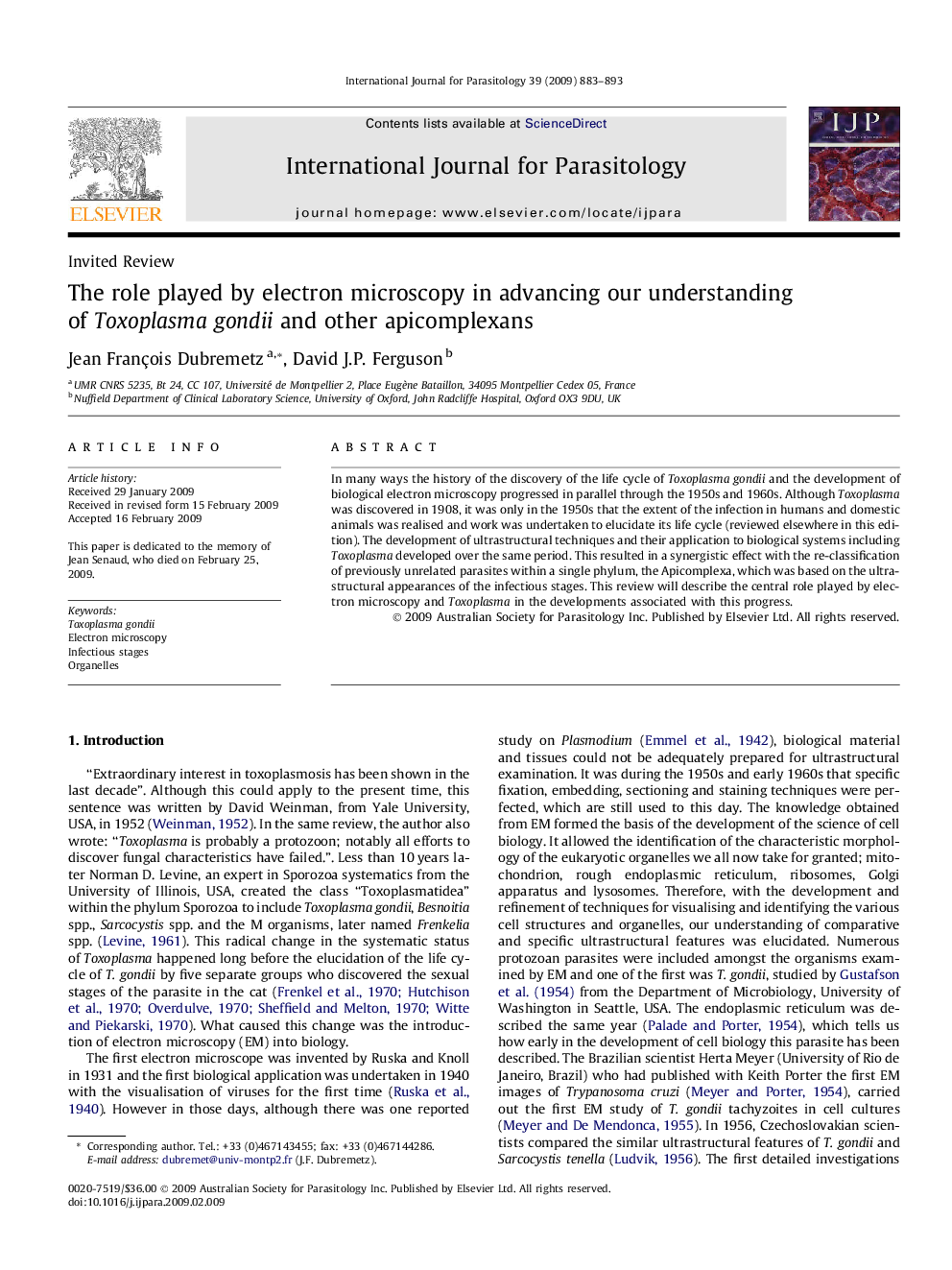| Article ID | Journal | Published Year | Pages | File Type |
|---|---|---|---|---|
| 2436787 | International Journal for Parasitology | 2009 | 11 Pages |
In many ways the history of the discovery of the life cycle of Toxoplasma gondii and the development of biological electron microscopy progressed in parallel through the 1950s and 1960s. Although Toxoplasma was discovered in 1908, it was only in the 1950s that the extent of the infection in humans and domestic animals was realised and work was undertaken to elucidate its life cycle (reviewed elsewhere in this edition). The development of ultrastructural techniques and their application to biological systems including Toxoplasma developed over the same period. This resulted in a synergistic effect with the re-classification of previously unrelated parasites within a single phylum, the Apicomplexa, which was based on the ultrastructural appearances of the infectious stages. This review will describe the central role played by electron microscopy and Toxoplasma in the developments associated with this progress.
